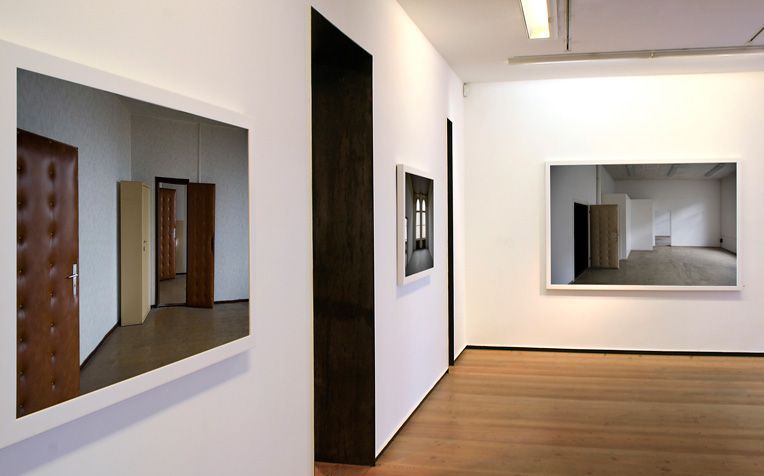



THE EMPTINESS OF MADNESS
Bruno Galindo
Disturbing elements –corridors in darkness, padlocks and walls, padded walls–. A clean deafness or an uneasy chiaroscuro. Sometimes a cold symmetry that makes the spectator loosing the relaxing certainty of Unity, sometimes compositions that reach cubist conclusions.
Carlos Cid found the scenery of these pictures in Berlin, but it could have been Nuremberg, Arles or Mondragon. Psychiatric pavilions rarely reach the category of celebrity, that in any case remains over its inhabitants –Argonauts of the non-sense: Althusser, Artaud, Van gogh–; regarding them societies divide themselves between atavistic terror and a fascination that many times is treated without much thought. Perhaps the great idea of this collection is the equidistant ad respectful position between both territories: Light and darkness, life and death, illusion and reality.
The emptiness of madness or madness of the emptiness? Cid presents the fairness: what is left when there is nothing left. When we observe the remaining of a demolished house we find a devastation of abandoned taps and plugs, painted papers and shadows of stairs that were and shaped the usual territory of tenths or hundred of inhabitants. Something similar is felt in this chipped space through the emptiness that Cid invite us to visit, and that has in the completeness not its antagonist but –here we have a radical Taoist idea- an harmonious partner.
By selecting this scenery (or, perhaps, throw the selection by space), Cid –sometimes with Kubrickian optic- touches great themes, from which will only come out of it unhurt whoever sometime might have prescribed himself within the category of mad ones. The dark cosmic show of a curative emptiness has to do both with lights and shadows of oneself: that is also in the pictures. The transition from the external space to the internal cannot be avoided. The building, empty and complete, is the mind. The Great Retreat, as defined by Foucault.